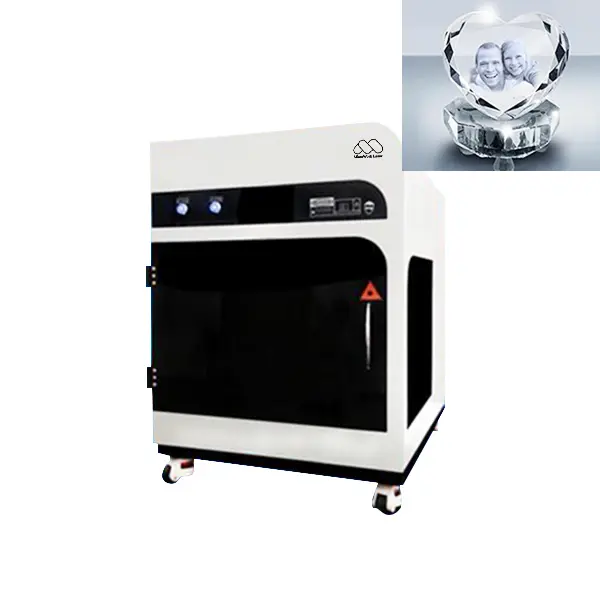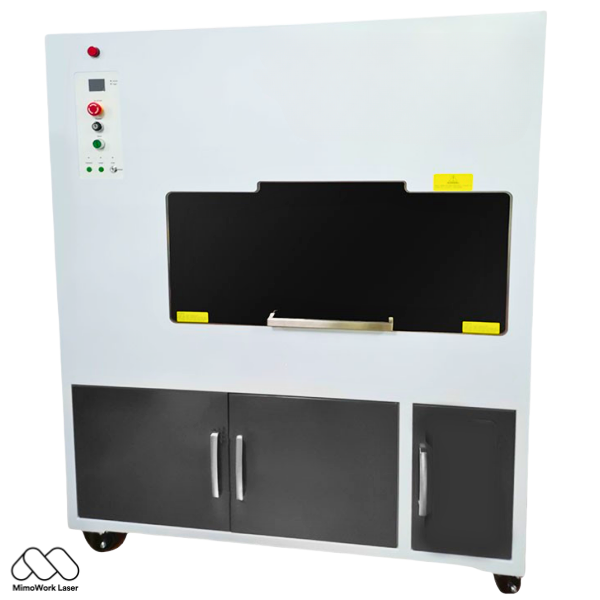3D Crystal Pictures: Bringing Anatomy to Life
Using 3D Crystal Pictures, Medical imaging techniques like CT scans and MRIs give us incredible 3D views of the human body. But seeing these images on a screen can be limiting. Imagine holding a detailed, physical model of a heart, brain, or even a whole skeleton!
That's where Sub Surface Laser Engraving (SSLE) comes in. This innovative technique uses lasers to etch intricate details into crystal glass, creating incredibly realistic 3D models.
1. Why Use 3D Crystal Pictures?
This process starts with a 3D scan of a patient or specimen.
This data is then used to create a digital model that is laser engraved into the glass.

Clinical CT Data Set of a Human Leg Anatomically Labeled Engraved in Crystal
Clear and Detailed: Glass allows you to see through the model, revealing internal structures.
Easy Labeling: You can add labels directly into the glass, making it easy to understand the different parts.
Multi-Part Assembly: Complex structures like skeletons can be made in separate pieces and assembled for a complete model.
High Resolution: The laser etching creates incredibly precise details, capturing even the smallest anatomical features.
2. The Benefits of Crystal Photos
Imagine being able to see inside the human body without surgery! That's what medical imaging technologies like CT scans and MRIs do. They create detailed pictures of our bones, organs, and tissues, helping doctors diagnose and treat illnesses.
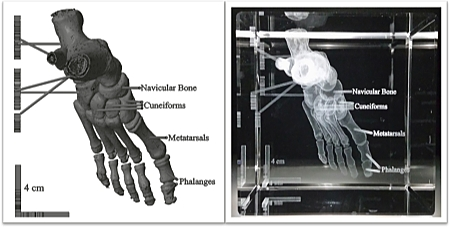
Anatomically Labeled Human Foot Displayed Virtually Using 3D Crystal Pictures
Powerful Educational Tool: These models are perfect for teaching anatomy in schools, universities, and medical training.
Research Applications: Scientists can use these models to study complex structures and develop new medical devices.
Affordable and Accessible: Compared to 3D printing, SSLE is a cost-effective way to create high-quality anatomical models.
The future of anatomy education and research is getting more tangible and exciting with Sub Surface Laser Engraving!
Want to Learn More About 3D Crystal Pictures & Sub Surface Laser Engraving?
We can Help!
Picture Inside Glass for Medical
CT scans are especially useful for building 3D models because they capture images with high resolution and clarity.
Software programs can then turn these images into virtual 3D models, which doctors use for planning surgeries, simulating procedures, and even creating virtual endoscopies.
Video Demo: 3D Subsurface Laser Engraving
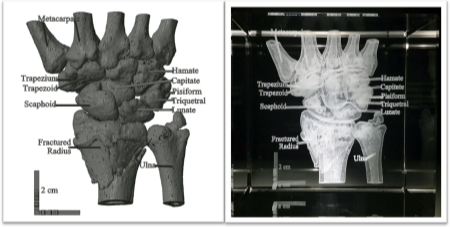
Clinical CT Data of a Broken Wrist Photo Etching on Glass
These 3D models are also incredibly valuable for research. Scientists use them to study disease models in animals, like mice and rats, and share their findings with the wider medical community through online databases.
4. 3D Printing & 3D Crystal Pictures
3D printing has revolutionized anatomical models, but it's not without its limitations:
Putting it Together: Creating complex models with multiple parts can be tricky, as the pieces often need extra work to hold together.
Seeing Inside: Many 3D printed materials are opaque, blocking our view of internal structures. This makes it hard to study bone and soft tissues in detail.
Resolution Matters: The resolution of 3D prints depends on the printer's extruder size. Professional printers offer much higher resolution but it's more expensive.
Costly Materials: The high cost of materials used in professional 3D printing prevents widespread use for mass production.
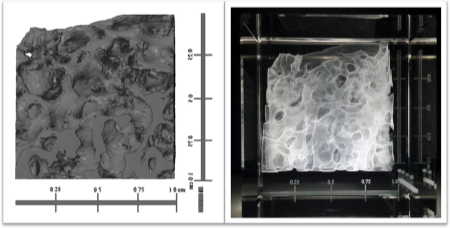
Pre-Clinical CT Data of a Sheep Bone Core Set as Crystal Photos
Enter 3D Crystal Engraving, also known as Sub Surface Laser Engraving (SSLE), uses a laser to create tiny "bubbles" within a crystal matrix. These bubbles are semi-transparent, allowing us to see internal structures.
Here's why it's a game-changer:
High Resolution: SSLE achieves a resolution of 800-1,200 DPI, exceeding even professional 3D printers.
Transparency: The semi-transparent bubbles let us see inside the model, revealing intricate details.
One Piece Wonder: SSLE creates complex models with multiple parts in a single crystal, eliminating the need for assembly.
Labeling Made Easy: The solid crystal matrix allows us to add labels and scale bars, making the models even more educational.
We can use CT scan data from various sources, including preclinical studies, hospitals, and online databases, to create 3D crystal models. These models can represent anatomical structures from different species and at different scales, adapting to the size of the crystal.
SSLE is a user-friendly technology that can be easily integrated into the existing workflow for 3D printing. It offers a powerful new tool for visualizing anatomy, with potential applications in education, research, and patient communication.
5. Best 3D Laser Engraving Machine
The crystal laser engraver uses a diode laser to create a green laser beam (532nm). This beam can easily pass through crystal and glass, allowing it to carve intricate 3D designs inside these materials.
Compact Laser Body Design
Safe & Shock Proof for Production
Up to 3600 Points/s Engraving Speed
Design File Support Compatibility
The One & Only Solution you will ever need for subsurface laser engraving crystal, packed to the brim with the latest technologies with different combinations to meet your ideal budgets.
Up to Six Configurations
Repeated Location Accuracy <10μm
Designed for Crystal Engraving
Surgical Precision & Accuracy
Post time: Aug-22-2024


